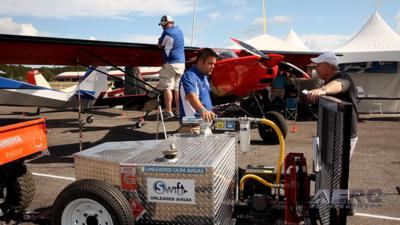Thu, Dec 30, 2021
Embattled Airports Being Forced to Remove 100LL for Branded Unleaded Gas
Santa Clara, California has continued its assault on general aviation operations in the vicinity, with the insistence of removing 100 low-lead fuel from sale in the two airports under its purview.

County Executive Jeff Smith said the county will not modify its approach, promising that it will be "lead free by January 1st." The move had piqued the attention of the FAA, who notified the county of an informal investigation under 14 CFR Part 13. The county was given 20 days to respond to the notice, but informal statements give the impression that the ban will go into effect December 31.
The FAA noted their plans to replace their fuel with a Smiths brand unleaded option, the company's 94UL. That fuel, while theoretically suited to a fairly wide variety of aircraft, still precludes the use of far more in the United States ecosystem. Those hoping to use the fuel will require a suitable STC for their particular aircraft, adding additional regulatory burden and cost to the average operator's already burdened pocketbook. The FAA's letter to the county warned of safety issues that would likely result from the change, as well as reiterated its commitment to remove lead from the aviation ecosystem. Those without suitable aircraft could leave their planes stranded at the airport, unable to refuel on the premises nor with enough to transit to another field. The agency has already rescinded federal funding on Reid-Hillview, with only San Martin receiving their money from the government purse. The threat of monetary abstinence remains one of the few sticks left on the table for an agency bereft
of carrots, and Santa Clara doesn't seem to care.

Local media sources quoted Barbara Lichman, a local aviation attorney, who said the FAA could try to exert authority over the issue, but “if (the county is) not afraid of losing federal funds, then I suppose they can just thumb their nose," leaving them with a legal battle to sort it all out. The fight wouldn't be new, as the agency listed a number of safety concerns aside from the fuel issue, ranging from improper landscaping that blocked airfield signage, faded signs and advisories, and a lack of timely cleaning that saw the buildup of fecal materials that could be a "significant hazard to the flying public". Lichman says they could likely have a case with the added safety complaints, saying “If they are running an airport that the FAA doesn’t deem safe, the FAA can come after them for punitive damages, assuming that there are dangerous problems not being remedied."
More News
From 2023 (YouTube Edition): New Propulsion Scheme Optimized for AAM Applications Founded in 2017 by Eric Bartsch, Pat Anderson, and Erik Lindbergh (grandson of famed aviation pion>[...]
During The Initial Climb, The Engine Began To Operate Abnormally And, After About Three Seconds, Experienced A Total Loss Of Power On October 29, 2025, about 1820 Pacific daylight >[...]
Aero Linx: Women in Aviation International Women in Aviation International is the largest nonprofit organization that envisions a world where the sky is open to all, and where avia>[...]
“We’ve paid for the cable line’s repair for the customer and have apologized for the inconvenience this caused them...” Source: Some followup info from an A>[...]
“We have long warned about the devastating effects of pairing optimization. Multiple times over many months, we highlighted how schedule manipulation, unbalanced schedules, a>[...]
 Classic Aero-TV: VerdeGo Debuts VH-3 Hybrid-Electric Powerplant
Classic Aero-TV: VerdeGo Debuts VH-3 Hybrid-Electric Powerplant NTSB Prelim: Grumman American Avn. Corp. AA-5B
NTSB Prelim: Grumman American Avn. Corp. AA-5B ANN's Daily Aero-Linx (12.02.25)
ANN's Daily Aero-Linx (12.02.25) Aero-News: Quote of the Day (12.02.25)
Aero-News: Quote of the Day (12.02.25) Aero-News: Quote of the Day (12.03.25)
Aero-News: Quote of the Day (12.03.25)




